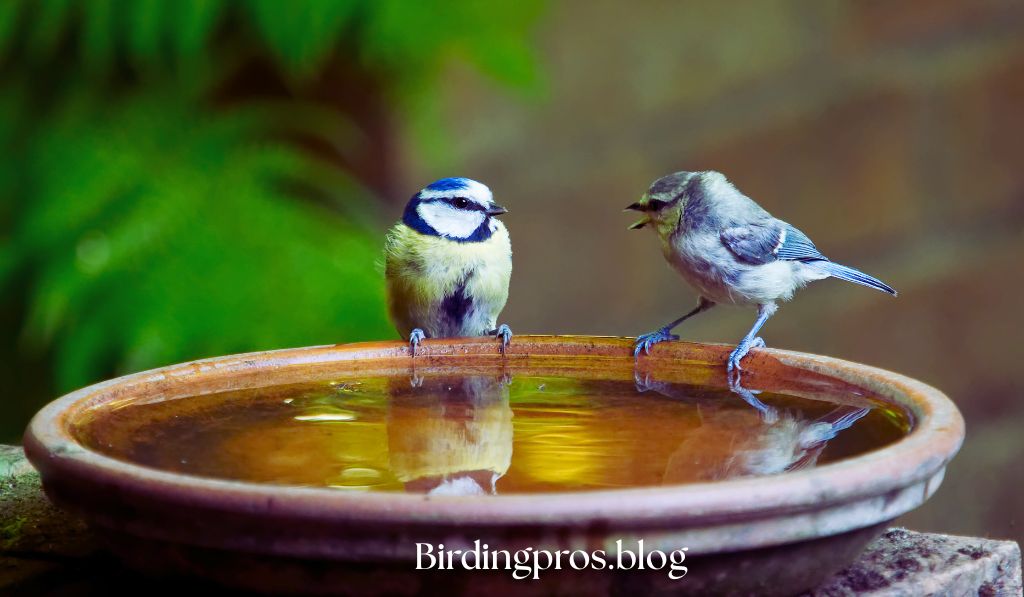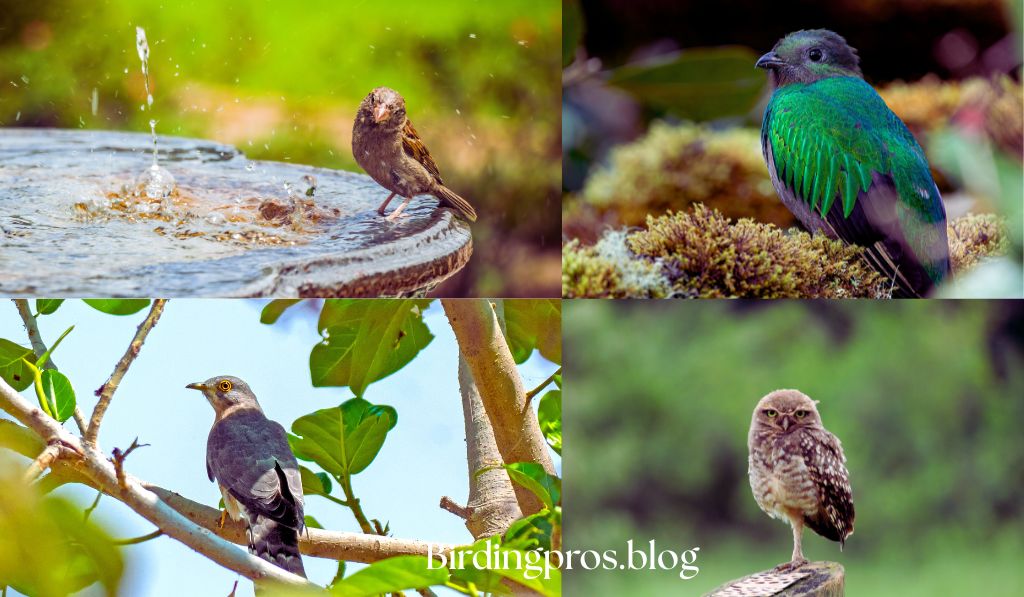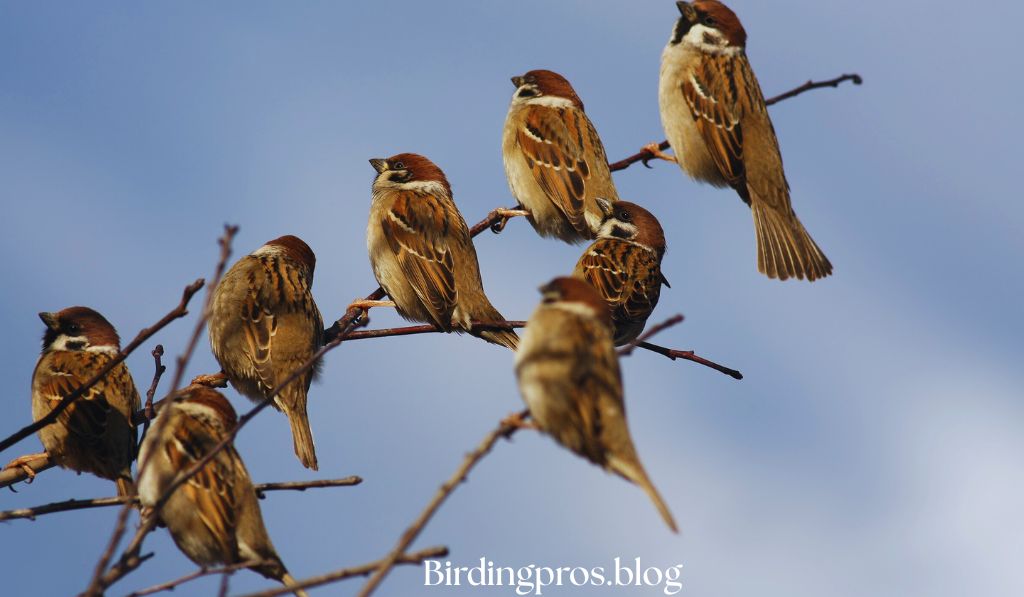Creating a colorful sanctuary for birds to your personal outside is each captivating and practicable inner simply one month.
This specific guide affords a each day roadmap to transform your out of doors location into an inviting haven that birds will flock to year-round.
We’ll discover the whole lot from choosing appropriate plants to installing feeding stations and developing shielding environments.
Designing an outdoor that draws birds is not just lovable—it’s an interesting venture that connects you with nature at the same time as supporting neighborhood natural globalism.
By presenting essential elements like nutrients, hydration, safety, and breeding locations, you’ll quickly welcome various avian web page visitors to your home.
Table of Contents
TogglePhase 1: Evaluation and Design (Days 1-7)

The first week specializes in making plans and organising the muse of your hen paradise. You’ll check your cutting-edge area, study suitable flowers, and begin the physical transformation of your outside with strategic planting.
Day 1: Survey Your Space
Begin your transformation adventure through engaging in a radical assessment of your existing backyard.
Take a strolling inventory of your property, noting your present day vegetation which includes trees, wood, and vegetation. Identify open areas suitable for feeders or water capabilities, and look for capability problems which include reflective glass or predators getting admission to elements.
Day 2: Research Region-Appropriate Plants
Native flowers paperwork the muse of any hen-fine environment. Devote nowadays to investigating indigenous vegetation that thrive in your weather place.
Focus on varieties that produce seeds, berries, nectar, or attraction to bugs—all natural meals sources for wonderful fowl species. Compile a choice of alternatives appropriate to your yard conditions.
Day 3: Develop Your Layout
With your studies whole, caricature a comprehensive plan for your outdoor location. Consider layout concepts together with growing multi-degree flora with floor cover, shrubs, and cover.
Group similar vegetation in clusters to maximise visible impact and habitat density, and choose kinds that provide resources across special seasons for year-round chook enchantment.
Day 4: Acquire Materials
Visit your neighborhood lawn middle or nursery to shop for flora out of your list.
While there, moreover gather first-rate soil and mulch, essential gardening implements, chook feeders in numerous patterns, birdbaths and water capabilities, and further chicken-attracting accessories to finish your imaginative and prescient.
Day 5: Soil Preparation
Healthy vegetation calls for proper soil situations. Today’s cognizance is making prepared planting areas thru putting off contemporary weeds and turf grass, turning soil to about 12 inches deep, and incorporating herbal depend to enhance fertility and drainage.
This steering ensures your vegetation will thrive and provide lasting assets for birds.
Day 6: Plant Larger Vegetation
Begin the transformation with the resource of setting up trees and larger shrubs.
For each plant, dig holes two instances the diameter of the foundation ball, set vegetation at appropriate depth, backfill with prepared soil, water very well, and look at mulch across the base to keep moisture. This huge vegetation will shape the spine of your fowl habitat.
Day 7: Add Flowers and Ground Coverage
Complete your planting phase via manner of inclusion of smaller plant factors. Install perennial and annual flora in complementary groupings and installation floor cover vegetation to reduce naked soil.
Focus on developing natural-searching clusters that attract pollinators, which in flip will entice insect-consuming birds for your yard.
Phase 2: Nutrition and Hydration Systems (Days 8-14)

The 2d week is devoted to supplying essential assets birds need for survival. You’ll create a whole device of feeding stations and water assets to draw and hold diverse chicken species sooner or later of the three hundred and sixty five days.
Day 8: Install Feeding Stations
Select and roll diverse feeder sorts to house one-of-a-type chook alternatives. Include hopper feeders for medium-sized birds, tube feeders for finches and small species, platform feeders for floor-feeding sorts, and suet cages for insect-eaters.
Place the ones close to the defensive cowl but with accurate visibility to make sure birds feel safe at the same time as feeding.
Day 9: Stock Appropriate Food Options
Fill your feeders with diverse vitamins that attract awesome bird species. Include black oil sunflower seeds to attract cardinals, chickadees, and finches; nyjer/thistle seeds for goldfinches and other small birds; white millet for floor-feeding sparrows and doves; suet cakes for woodpeckers, nuthatches, and chickadees; and nectar solution for hummingbirds and orioles.
Day 10: Create Water Features
Birds require water to get right of access for each consuming and grooming.
Install bird baths that have shallow basins (1-2 inches deep), embody regularly sloping elements, are located in partially shaded places, and stay visible out of your announcement elements. Water is frequently neglected however it is a vital element in attracting birds.
Day 11: Enhance Water Features
Make your water sources extra attractive through adding movement factors. Install small water circulators or bubblers, add dripper attachments, and consist of small-scale misters.
These dynamic functions entice birds with sound and movement, making your water skills more extensive and enticing to passing birds.
Day 12: Establish Specialized Feeding Stations
Focus on including specialized vitamins to attract particular chicken types. Mount suet feeders on tree trunks or poles, function them where insect-ingesting birds can get entry to them successfully, and ensure placement deters non-goal animals.
These specialised stations will assist diversify the bird species visiting your backyard.
Day 13: Set Up Hummingbird Stations
Create committed feeding regions for hummingbirds, which require particular motels.
Hang nectar feeders containing four:1 water-to-sugar solution, surround them in sunny locations near flowering flora, and make sure they get proper access for cleaning and refilling. Hummingbirds convey colourful colour and movement in your hen paradise.
Day 14: Create Maintenance Schedule
Develop a sustainable device for ongoing care of your feeding stations. Establish everyday cleaning workouts for all feeders, plan water characteristic maintenance and refreshment, and create a calendar for seasonal modifications to feeding alternatives. Consistent maintenance guarantees wholesome birds and continued visits.
Phase 3: Protection and Nesting Opportunities (Days 15-21)

The 0.33 week focuses on developing steady areas for birds to rest, secure haven, and reproduce. These elements transform your outside from a feeding forestall into a real fowl sanctuary in which birds can whole their lifestyles.
Day 15: Add Protective Vegetation
Install extra secure haven-supplying flowers that supply birds locations to cover and break out predators. Include dense evergreen shrubs for year-round safety and thorny sorts for predator deterrence.
Position these shielding flowers near feeding and water stations to provide short refuge for traveling birds.
Day 16: Install Nesting Structures
Provide synthetic nesting options tailored to nearby species to encourage birds to elevate their younger in your yard.
Mount birdhouses suitable for nearby birds, follow species-precise placement suggestions for top and route, ensure right ventilation and drainage abilities, and steady mountings to save you damage from climate.
Day 17: Build Natural Cover Areas
Create herbal hideaways and defensive zones that mimic wild habitats.
Construct brush piles using collected branches and backyard trimmings, function them in quiet corners faraway from immoderate-site visitors areas, and set up materials to provide a couple of get admission to/go out factors.
These natural shelters attract birds that determine upon greater traditional nesting websites.
Day 18: Supply Nesting Materials
Help birds construct their houses by presenting building materials within the direction of your outdoors.
Create small collections of herbal fibers, grass clippings, and small twigs, region substances in mesh holders or shallow platforms, and distribute round your backyard for clean discovery. Different chicken species select numerous substances for their nests.
Day 19: Create Resting Points
Establish strategic piercing places in which birds can rest and feature a look at their surroundings.
Install varying heights of natural branches, function perches with specific visibility of feeders, and make sure options for both solar and color. Perches additionally serve as making song posts for territorial birds in the path of breeding season.
Day 20: Add Vertical Habitat
Enhance current structures with mountaineering flowers to create extra usable area for your backyard.
Plant neighborhood vines alongside fences or trellises, pick out types that provide each cover and meals, and take into account seasonal blooming cycles for continuous resources. Vertical habitats maximize your backyard’s bird-helping potential.
Day 21: Perform Safety Inspections
Review all installed factors for ability problems that would damage your avian traffic.
Check structural integrity of nest packing containers and feeders, find out predator access points that need addressing, and determine weather-associated issues requiring reinforcement.
Regular protection exams make sure your bird paradise stays consistent.
Phase 4: Habitat Enhancement and Bird Observation (Days 22-30)

The very last section refines your chicken paradise with additional talents whilst establishing systems to experience and screen your success.
These finishing touches create a sustainable fowl habitat that gives 12 months-spherical benefits.
Day 22: Incorporate Fruit-Producing Plants
Add plants that produce natural bird food to lessen reliance on feeders. Plant greater berry-generating shrubs like elderberry or serviceberry, include fruit wood suitable in your weather area, and installation for sequential fruiting intervals across seasons. Fruiting vegetation provides nutritional range for traveling birds.
Day 23: Establish Seed Gardens
Create dedicated areas for seed-generating plant life so that you can self-maintain after initial planting.
Plant sunflowers, coneflowers, and black-eyed Susans, allow seed heads to stay after blooming, and characteristic for each hen access and visual appeal. These natural feeding stations require minimal renovation as soon as installation.
Day 24: Develop Bird-Friendly Ground Cover
Transform lawn regions to guide avian visitors and boom habitat variety. Introduce local grasses and wildflowers, reduce chemical treatments that harm insect populations, and create microhabitats with numerous ground textures.
Bird-friendly floor cover attracts floor-feeding species and supports beneficial bugs.
Day 25: Establish Weather Protection
Create limitations toward harsh conditions to make your yard hospitable year-round.
Plant windbreak hedges along property perimeters, install seasonal protection close to feeding stations, and don’t forget sun/coloration styles at some stage inside the three hundred and sixty five days. Weather safety ensures birds can use your outdoors even sooner or later in inclement conditions.
Day 26: Set Up Observation System
Create ways to display your outside site visitors and track your success. Designate comfortable viewing places, install clean monitoring systems which include notebooks or cameras, and begin documenting species that visit your outside.
Regular observation enables you to apprehend patterns and make upgrades.
Day 27: Connect with Broader Conservation
Join citizen technological knowledge initiatives to make a contribution to your observations to medical studies.
Register with packages like eBird or Project FeederWatch, examine protocols for regular information collection, and percentage your observations with scientific networks. Your outside facts allow researchers to music chicken populations and migration patterns.
Day 28: Share Your Knowledge
Become a network useful resource via spreading your newfound information.
Inform buddies about your hen-pleasant practices, offer guidance to others interested in comparable tasks, and endure in thoughts website hosting a small demonstration or tour. Sharing expertise multiplies the impact of your conservation efforts.
Day 29: Evaluate Your Progress
Conduct a complete evaluation of your month-long challenge.
Document fowl species found so far, pick out areas needing adjustment or enhancement, and observe seasonal patterns rising in vacationer interest. This evaluation helps you advise for endured upgrades on your chook paradise.
Day 30: Celebrate Your Achievement
Take time to comprehend your newly transformed area and all of the artwork you’ve got finished.
Set apart amazing commentary time, picture present day-day situations as a baseline for destiny contrast, and reflect on the ecological price you’ve got created. Your chicken paradise is now geared up to adapt and beautify over the years.
Common Questions About Bird-Friendly Backyards
Creating a chook-friendly outside often increases questions about pleasant practices and maintenance.
Here are answers to some often requested questions that will help you keep your chook paradise.
What native flora paintings are first-rate for attracting birds?
Include a various combination of oak, pine, or maple bushes; holly, viburnum, or dogwood shrubs; sunflowers, zinnias, or bee balm flora; and trumpet vine or Virginia creeper for trekking plants.
Native flora specific in your location will entice local birds that are superior alongside those plant species.
What preservation agenda must I comply with for fowl feeding stations?
Clean feeders thoroughly each 1-2 weeks the use of a 10% bleach approach to save you ailment transmission.
Clean bird baths every 2-three days, scrubbing surfaces to save you algae growth and mosquito breeding. Regular upkeep ensures your feeding stations stay healthy environments for visiting birds.
How can I maximize chicken range in my backyard?
Create micro-habitats with numerous flower heights, offer more than one food variety along with seeds, end result, nectar, and insects, provide year-round water, get admission to, and encompass every natural and synthetic nesting alternatives.
Diversity in habitat abilities draws a wider variety of fowl species to your backyard.
What protection measures must I implement for chook protection?
Use window decals or presentations to save you from collisions, keep domestic pets supervised outside, keep away from pesticide use, offer get away routes near feeding stations, and regularly hold nesting structures to prevent parasite buildup.
Safety measures make sure birds can thrive to your outside without pointless risks.
Final Thoughts
Creating an inviting environment for birds calls for just 30 days of dedicated strive, however gives limitless amusement and ecological blessings.
By methodically imposing this step-through-step technique, you have set up a sustainable habitat that offers essential resources for neighborhood and migratory hen populations.
Your transformed outside now offers more than surely aesthetic appeal—it serves as a functioning environment that supports biodiversity proper outdoors your door.
As seasons change, you may find new site visitors and behaviors, growing an ever-evolving reference to the natural worldwide.
Whether you’re a professional birder or new to plants and fauna gardening, your hen-exceptional outdoors represents a meaningful contribution to conservation efforts even as bringing the satisfaction of fowl looking immediately to your house.
Enjoy the factors of hobby, sounds, and pride of your private chook paradise.
Related posts
Desert Birds: Masters of Survival in Arid Landscapes 2025 Guide
How to Transform Your Yard into a Songbird Paradise: 6 Expert Strategies






